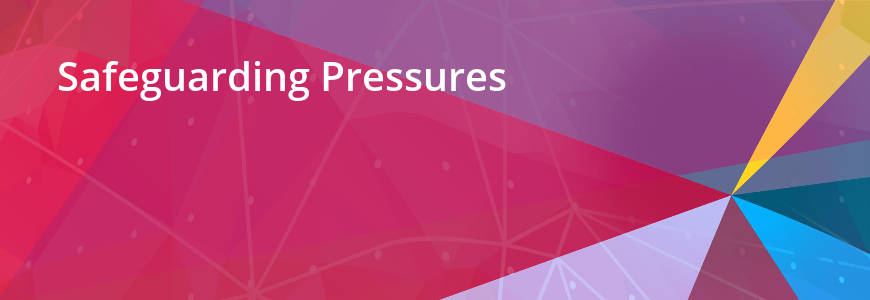Gangs and criminal exploitation

There are various risk factors that can increase the likelihood of children and young people being drawn into gangs or being criminally exploited, from being out of school, a lack of positive activities in the local area and inequality to poor mental health. Those at risk of gang involvement are not always known to children’s social care, or the police, but are usually known to wider services e.g. schools, which underlines the need for an integrated, multi-disciplinary response.
A lot of good work is happening in local partnerships to understand these ‘extrafamilial’ risks, from weapon awareness sessions in schools to embedding youth workers in hospital trauma units. These initiatives are making a difference at an individual level but we urgently need a whole system response that tackles the root causes of harm as well as the societal conditions that allow abuse and exploitation to flourish to keep more children and young people safe. This will require a radical shift in policy, practice and funding.
Recently the UK government pledged to adopt the Scottish approach to violence reduction but little detail of how this would look beyond a proposed statutory duty on public agencies has been shared. The legislative imperatives to have due regard to prevent violence, to protect young people and promote their wellbeing, already exist. It is always possible to improve multi-agency working, commissioning and information sharing locally and we must strive to do so.
A public health approach to reducing serious youth violence isn’t a miracle cure, it requires a long-term commitment and a long-term funding settlement. It should focus on preventing future harm via the provision of help and support at the earliest possible opportunity as well as offering multi-intensity responses to existing risks via universal, targeted and specialist interventions.
Such approaches do not inhibit the role of policing, particularly in relation to disruption activities, but children’s services are best placed to lead a multi-agency endeavour. Stricter laws, longer sentences and the expansion of police powers will not stop young people being criminally exploited nor address their vulnerabilities. There is a wealth of learning for us all to draw on from in designing a public health approach; from responses to child sexual exploitation, efforts to reduce teenage pregnancies and first-time entrants to the criminal justice system to the Troubled Families Programme.
The first step, which we urgently need to take, is to agree what constitutes a public health approach. A national commitment to early help services and a comprehensive framework that bridges the ‘cliff edge’ of support between children’s and adult social care is needed. Other facets of a public health response could usefully include a clear commitment to community policing, to inclusion in schools, a revitalised curriculum, better careers advice, investment in community-based youth work, expanded drug rehab provision for under 18s and better access to adolescent mental health services. The Association recently published a discussion paper on serious youth violence and knife crime which we hope will trigger a thoughtful debate about these issues and our collective responses to them, now and in the future.
Rachel Dickinson is Executive Director of People at Barnsley Metropolitan Council and ADCS President 2019/20.
This column was first published in CYP Now on 30 July 2019. | https://www.cypnow.co.uk/cyp/feature/2006951/gangs-and-criminal-exploitation-policy-context
Related Articles
John Pearce comments on measures to introduce mandatory reporting in the...
In Safeguarding & Child Protection
John Pearce responds to the National Panel’s annual report.
In Safeguarding & Child Protection
John Pearce on the government’s response to the Safeguarding children with...
In Safeguarding & Child Protection
ADCS responds to a further consultation on mandatory reporting by the Home...
In Safeguarding & Child Protection
Unaccompanied asylum seeking (UAS) children have received substantial media...
In Asylum
ADCS response to the DfE’s consultation on updates to its information...
In Safeguarding & Child Protection
ADCS has responded to the recent DfE consultation on updates to Working...
In Safeguarding & Child Protection
ADCS response to the government consultation on a new mandatory reporting duty.
In Safeguarding & Child Protection
John Pearce comments on the government response to the final report of the IICSA
In Safeguarding & Child Protection
ADCS response to the Child Safeguarding Practice Review Panel’s phase two...
In Safeguarding & Child Protection
John Pearce comments on mandatory reporting of csa
In Safeguarding & Child Protection
Steve Crocker responds to the Children’s Commissioner’s report on...
In Safeguarding & Child Protection
ADCS President Steve Crocker said: “The Association has significant concerns...




